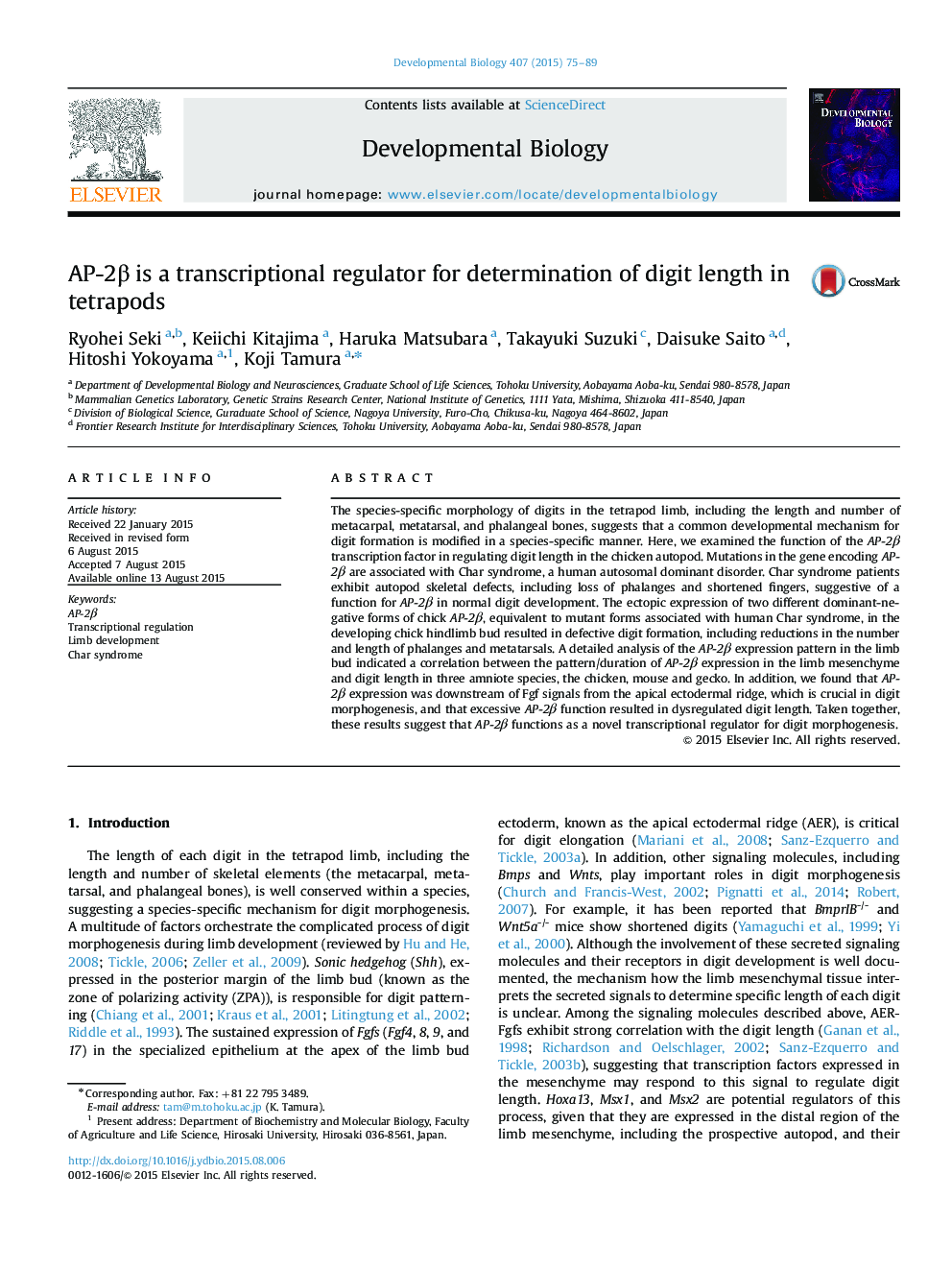| Article ID | Journal | Published Year | Pages | File Type |
|---|---|---|---|---|
| 2172888 | Developmental Biology | 2015 | 15 Pages |
•AP-2β is essential for normal skeletal morphogenesis in the autopod.•Duration of AP-2β expression correlates with the digit length in three species.•AP-2β might play a role in control of the prospective digital cell number.•AER-Fgfs is required for the maintenance of AP-2β expression.•Shh is involved in the induction of AP-2β expression.
The species-specific morphology of digits in the tetrapod limb, including the length and number of metacarpal, metatarsal, and phalangeal bones, suggests that a common developmental mechanism for digit formation is modified in a species-specific manner. Here, we examined the function of the AP-2β transcription factor in regulating digit length in the chicken autopod. Mutations in the gene encoding AP-2β are associated with Char syndrome, a human autosomal dominant disorder. Char syndrome patients exhibit autopod skeletal defects, including loss of phalanges and shortened fingers, suggestive of a function for AP-2β in normal digit development. The ectopic expression of two different dominant-negative forms of chick AP-2β, equivalent to mutant forms associated with human Char syndrome, in the developing chick hindlimb bud resulted in defective digit formation, including reductions in the number and length of phalanges and metatarsals. A detailed analysis of the AP-2β expression pattern in the limb bud indicated a correlation between the pattern/duration of AP-2β expression in the limb mesenchyme and digit length in three amniote species, the chicken, mouse and gecko. In addition, we found that AP-2β expression was downstream of Fgf signals from the apical ectodermal ridge, which is crucial in digit morphogenesis, and that excessive AP-2β function resulted in dysregulated digit length. Taken together, these results suggest that AP-2β functions as a novel transcriptional regulator for digit morphogenesis.
